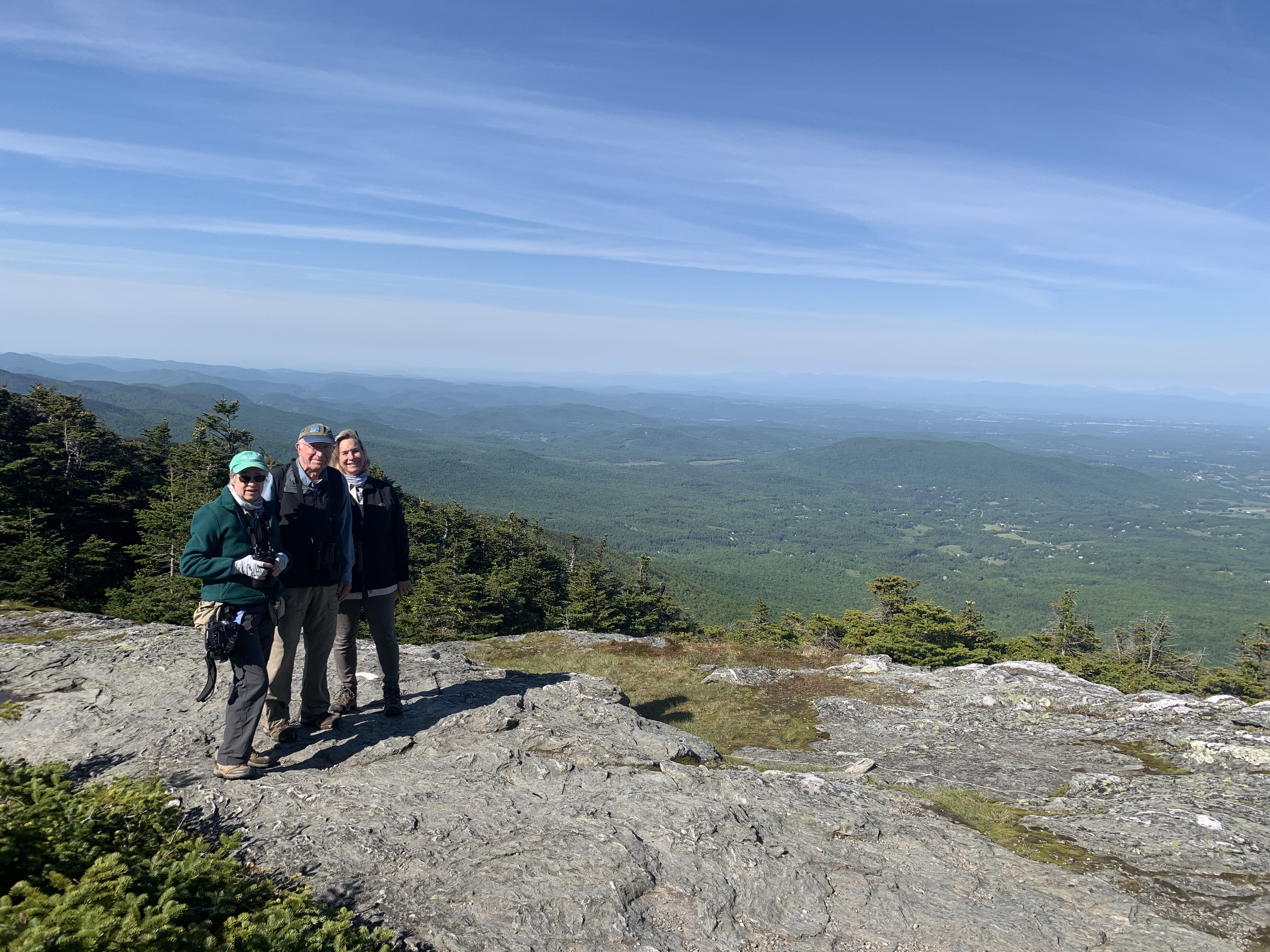
Boreal Forests & Bicknell’s Thrushes
American Explorer Series
May 30 – June 5, 2021
By Aaron Steed
Our maiden Vermont Venture was primarily based in Burlington, Vermont’s largest city. Our hotel was just a few minutes from Shelburne Bay, located on the eastern shore of Lake Champlain. A cluster of adjacent parks and reserves here made for a nice visit on the afternoon of arrival day, providing a good introduction to the breeding birds of the northeast US. Despite it being cloudy and somewhat drizzly, the birding was quite good. We heard the songs of Ovenbird, Veery, and Wood Thrush ringing out from the nearby woodland while Common Yellowthroat, Yellow Warbler, and Warbling Vireo sang out in the meadows. An active pair of Eastern Kingbirds ‘hawked’ for insects over the fields and we got great views of American Redstart, Alder Flycatcher, and Baltimore Oriole as well. Exploring a trail along the LaPlatte River marsh yielded Caspian Tern, Black-crowned Night-Heron, and close views of a hen Wood Duck with 5 ducklings in tow on the river.
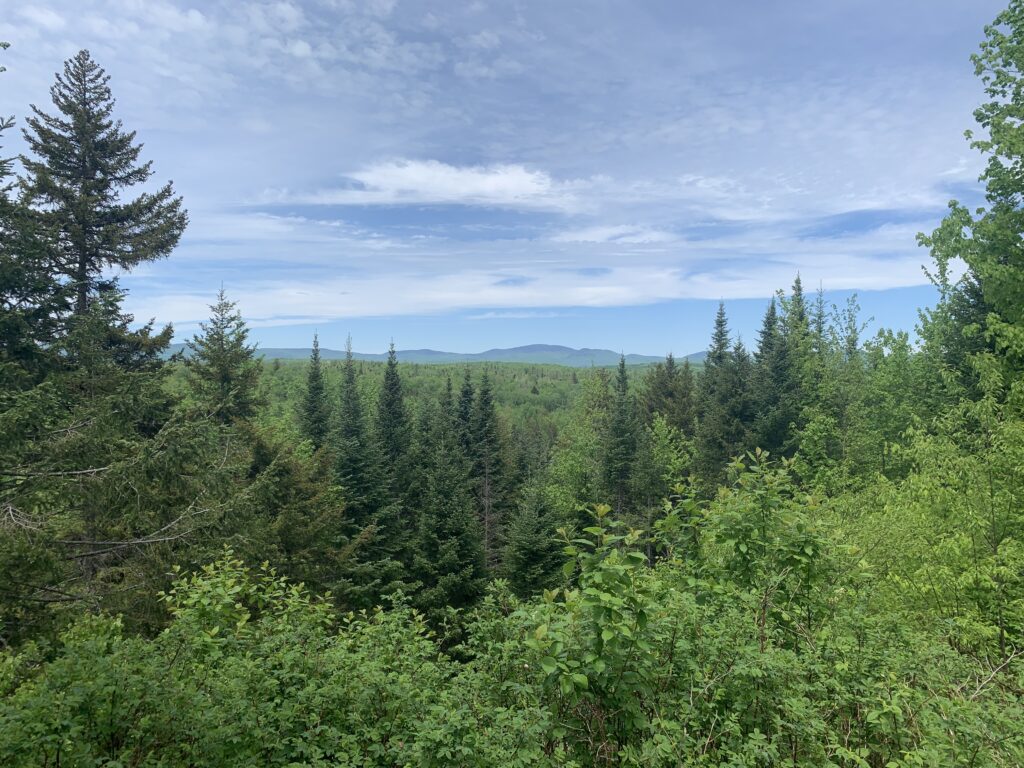
Overlook at Silvio O. Conte National Wildlife Refuge
Over the next few days we explored some of North Vermont’s prime birding areas, all within relatively easy driving distance from Burlington. Our first stop was up near the Canada border, the Franklin County Airport outside Swanton. The airport and runway are surrounded by fields which are allowed to grow up every year to prevent nuisance birds (namely gulls), which can be safety concerns for small aircraft, from frequenting the area. As such, the property is an important bird area (IBA) and is a haven for a number of sparrows, namely Grasshopper, an endangered species in Vermont. Not long after we arrived, we managed to get good views of not only Grasshopper but Savannah and Vesper Sparrow as well – most of them conveniently perching up on the chain link fence surrounding the runway, allowing for prolonged study through the scope. The sparrows didn’t stop there though, and we soon found the more widespread Song, and Chipping Sparrows before stumbling across a Clay-colored Sparrow, a regional rarity and one we certainly were not expecting. Hopping out in the road next to a Field Sparrow, it soon flew up into a cedar and obliged us with its textbook buzzy song. What a nice surprise!
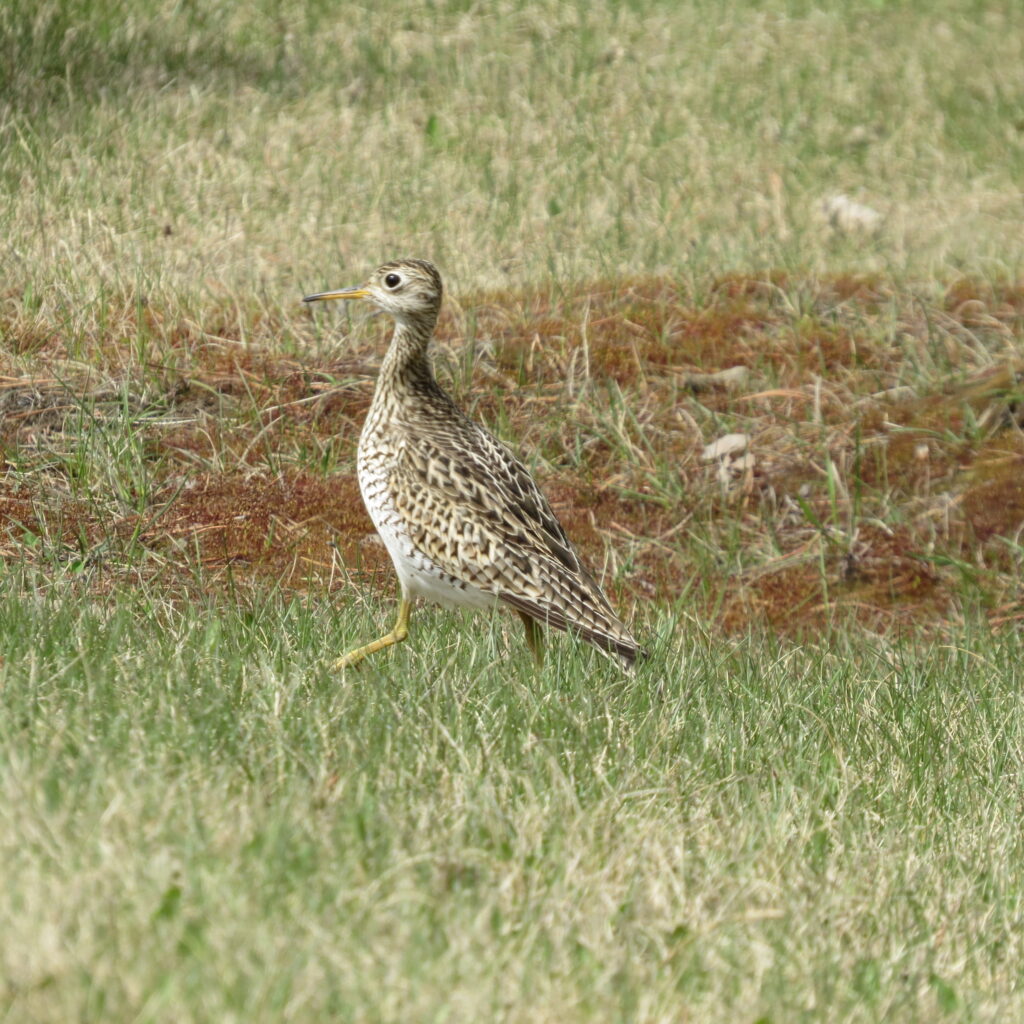
Upland Sandpiper 
Clay-colored Sparrow by Keith Watson
After having such good luck on the sparrow front, we then turned our attention to finding Upland Sandpiper, another state endangered bird. Following a tip from local birders, we soon found ourselves parked behind an old barn overlooking overgrown meadows and hayfields, scanning the many fence posts for the characteristic plump body/small head/long legs combination the species is known for. We spotted Eastern Meadowlarks and Bobolinks, two firsts for the trip, more Savannah Sparrows, Green Heron, and a Wilson’s Snipe perched on a post. After about 20 minutes, a keen-eyed participant (Patricia) spotted our target bird up on a different post, and soon we were all on it, getting brief looks through the scope before it hopped off into the long grass. We thanked Ed, the owner of the farm, both for his hospitality and for leaving his fields long for the sandpiper, and we were on our way.

Aaron at Missisquoi National Wildlife Refuge
At Missisquoi NWR, we marveled at the gracefulness Northern Harriers as they cruised low over the fields with seemingly little effort in less-than-ideal wind. An active pair of Merlins rapidly whooshed by overhead calling, allowing for brief views. At the visitor center, we managed to find a couple of the Cliff Swallows that have only recently started nesting in this part of the state.
At the Stephen Young Marsh, we had great looks at Blue-winged Teal, Hooded Merganser, Least Sandpiper, and Willow Flycatcher, while from another trail we had Common Raven, Bald Eagle, and Yellow-bellied Sapsucker. By sunset we were watching Black Terns hunt insects over the marsh along the main road.
A whole day spent searching the Northeast Kingdom for boreal birds was up next and required an early departure from Burlington to maximize birding time. We focused our efforts on Moose Bog, the best place in the state for many of our boreal targets. Stepping from the vehicle we heard numerous warbler songs – Nashville, Magnolia, Canada, Blackburnian and Parula – as well as the buzzing of mosquitoes, which was far less pleasant than warbler song! We loaded up on bug spray and ventured into the bog. In some places the trail was quite narrow, and the dense evergreen vegetation made viewing some birds difficult at times, but we managed alright! We quickly found many of the more common boreal bog residents – Ruby-crowned & Golden-crowned Kinglets, Blue-headed Vireo, Red-breasted Nuthatch, Winter Wren, and Hermit Thrush. Yellow-bellied Flycatchers sang from a few places along the trail and we got great looks at one up in a spruce. We found Ring-necked Duck and American Black Duck out on the pond and had a close encounter with a Lincoln’s Sparrow on one of our many back-and-forth walks along the trail.

Birding at Moose Bog 
Moose Bog
After lunch in Island Pond, we returned to the bog for another attempt at finding our remaining boreal targets. Our persistence paid off, first with the enjoyment of observing an Olive-sided Flycatcher hunting insects from dead snags in the bog, followed by the excitement and realization that the dark blob perched high above our heads was in fact, a male Spruce Grouse. How many times had we walked past it over the course of the day?
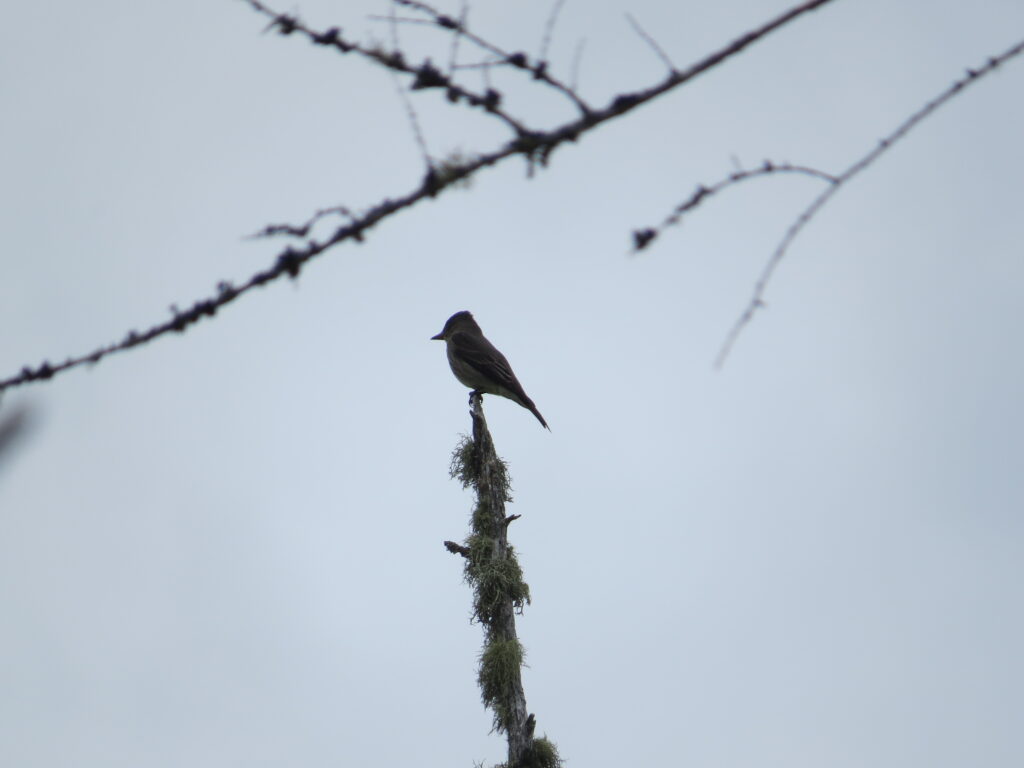
Olive-sided Flycatcher 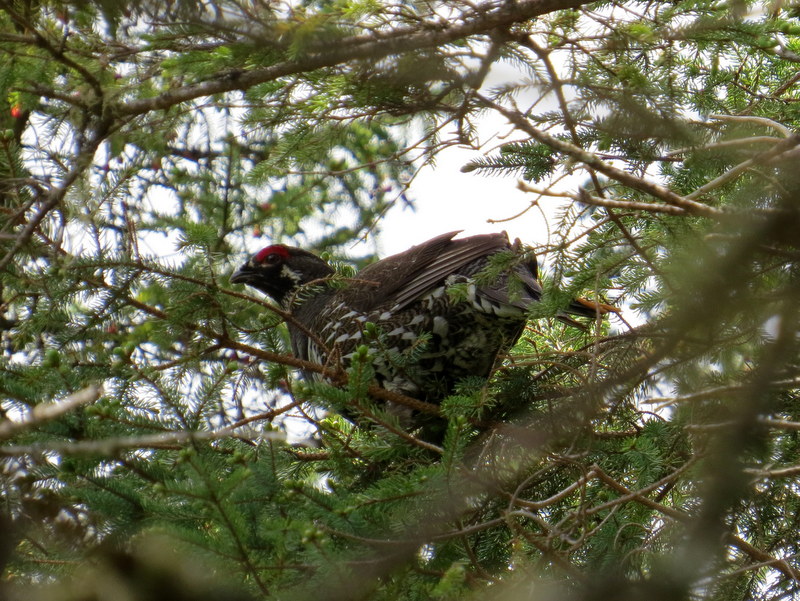
Spruce Grouse
Our visit to Mt. Mansfield, Vermont’s tallest peak, was certainly a memorable one. Our main target today was the Bicknell’s Thrush, which breeds in the stunted and windblown krummholzof the high elevations in the northeast US.
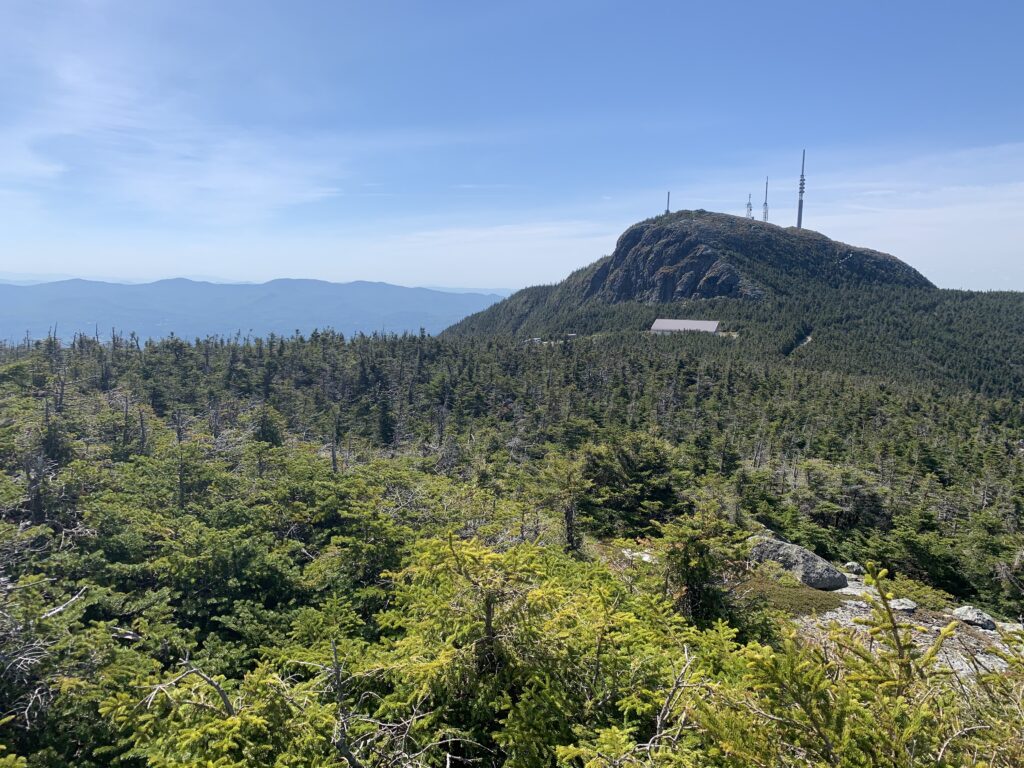
Mt. Mansfield 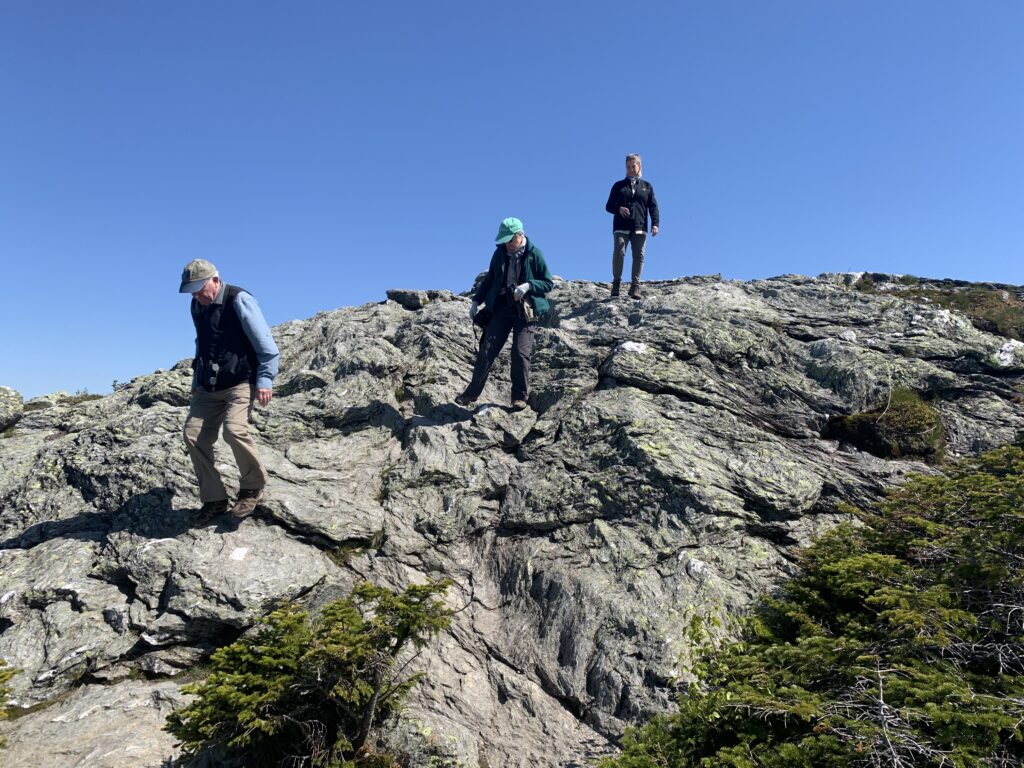
Mt. Mansfield
Our visit coincided with the first day of the Vermont Center for Ecostudies bird banding season and soon after arriving we were able to see several birds up close at the banding table – Yellow-bellied Flycatcher, Blackburnian & Blackpoll Warblers, Ruby-crowned Kinglet, and yes – even a Bicknell’s Thrush!
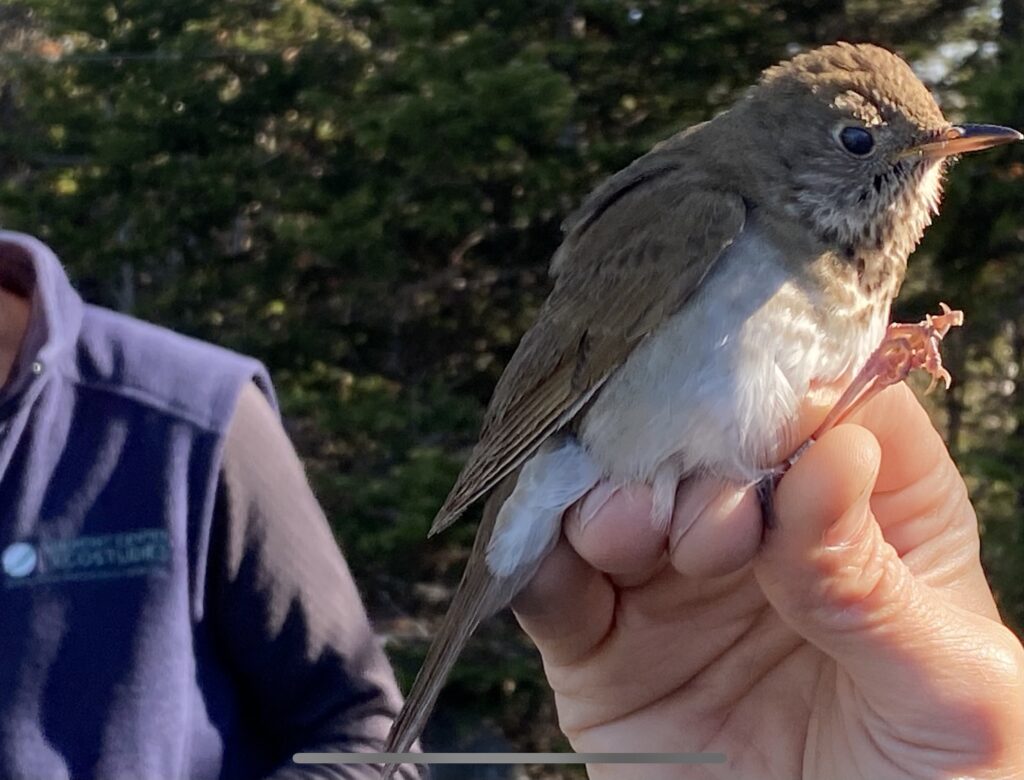
Bicknell’s Thrush by Patricia Ryan
It was indeed fascinating to see such an enigmatic songbird up close for such a prolonged period, but we also wanted to experience seeing the bird in more natural circumstances, so we hit the trails! As expected, we heard more thrushes than we managed to lay eyes on, but one cooperative bird did eventually land (albeit briefly) directly in the middle of the trail for a good view lasting a few seconds. There were also numerous White-throated Sparrows and Dark-eyed Juncos, plus Yellow-rumped and Blackpoll Warblers, and several Purple Finches.

White-throated Sparrow y Terry Anderson 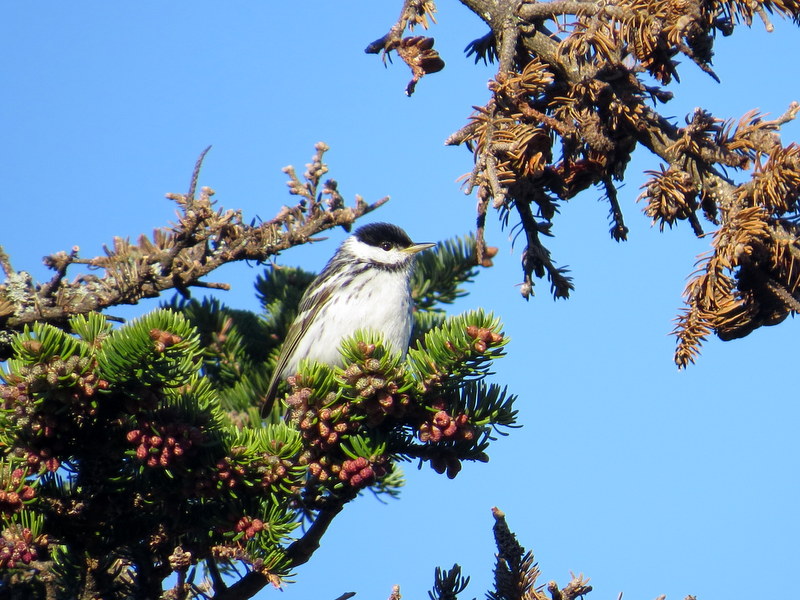
Blackpoll Warbler
Our final two nights were spent in the small, charming town of Woodstock. Our hotel overlooked the Ottauquechee River, where Warbling Vireos, Yellow Warbler, Common Yellowthroat, and Indigo Bunting were heard and seen each day. Less than 10 minutes away was Marsh Billings Rockefeller Memorial Park, a great place for a selection of wood warblers and other woodland species. The best bird of our visit was a male Mourning Warbler, which we had excellent views of in a forest clearing.

Ottauquechee River 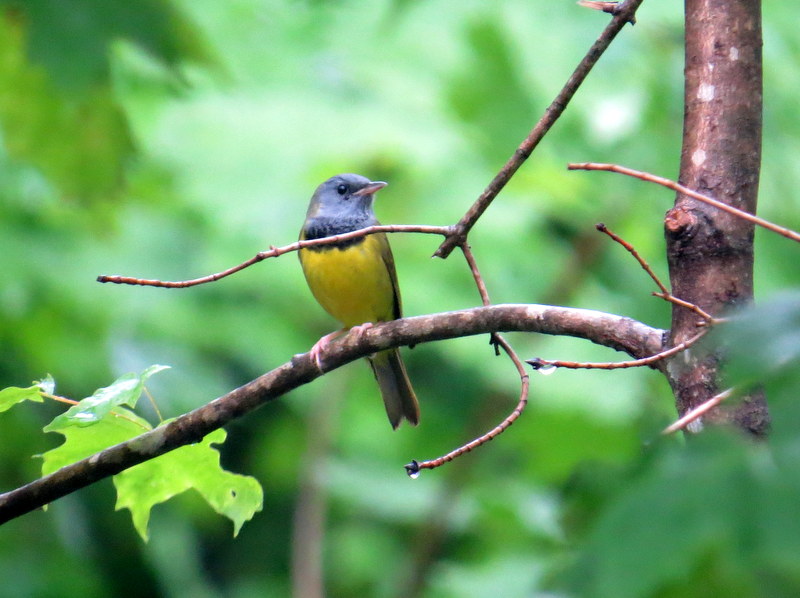
Mourning Warbler
We encountered a good many other memorable birds here as well including Scarlet Tanager, Rose-breasted Grosbeak, Brown Creeper, and Chestnut-sided, Black-throated Blue, Black-throated Green, and Black-and-white Warblers. There was also a notable emergence of Eastern Red-spotted Newts following the previous night’s rain, with well over 50 red efts counted by us – and that was only those we saw on the trail!

Eastern Red-spotted Newt
Our last afternoon was a fairly packed one; we made a short visit to see some of the last remaining old growth hardwoods in the state at Gifford Woods, then we enjoyed some successful rarity searching at various roadside stops and powerline cuts, where we had Prairie Warbler and Yellow-breasted Chat! An evening visit to West Rutland Marsh was less birdy and more buggy than we hoped, but we did find a few things of note including Bank Swallow, Marsh Wren, loads of Willow Flycatchers, and right around sunset we heard a few Virginia Rails grunting unseen from the marsh reeds.
Our final attempts to find Golden-winged or Blue-winged Warblers, or their hybrids, were unfortunately unsuccessful, but we did enjoy a few leisurely strolls around several of the parks and reserves in the greater Burlington area on departure day. Our tour finished with 138 species encountered, including most of our boreal targets and the Bicknell’s Thrush, one of North America’s rarest songbirds.



Finally seeing a Bicknell’s Thrush was the highlight of this trip…every thing else was gravy ! I really enjoyed seeing most of this state and the variety of birds. The beer at the Von Trapp brewery in Stowe was another highlight. Thanks to Aaron for such a good trip.